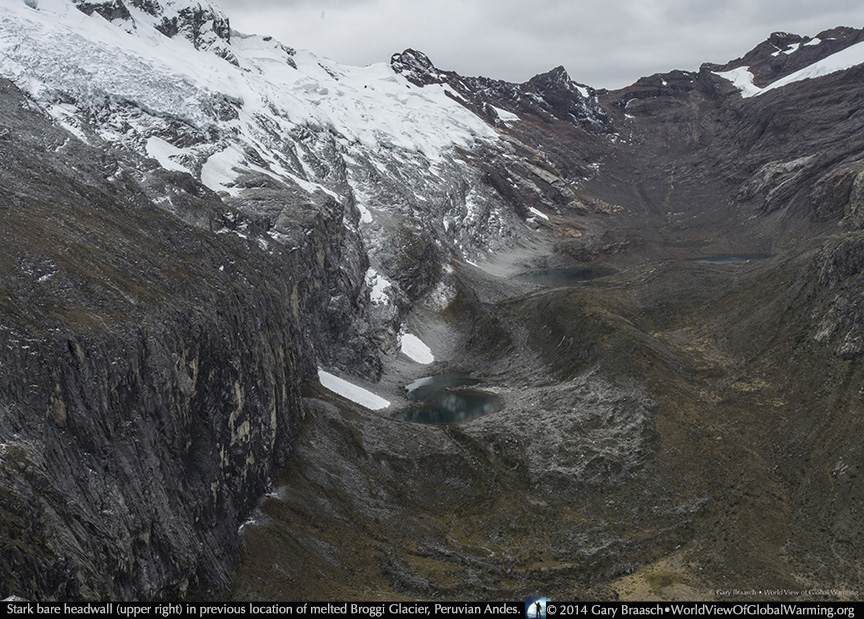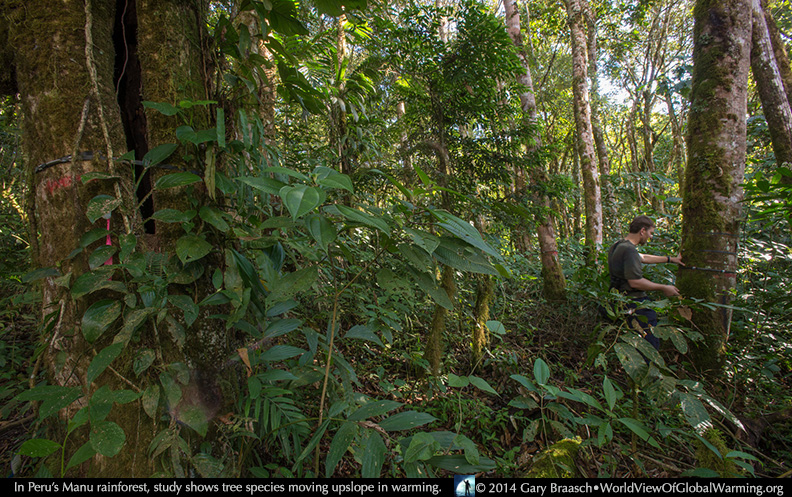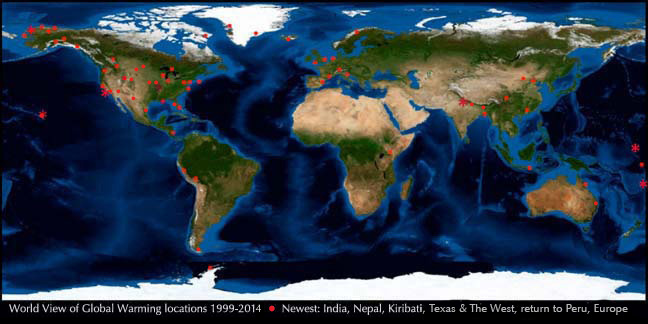Climate Photo of the Week
Crucial climate negotiations come to Lima as Peru's great ecosystems -- mountains, rivers, rainforests and the people they support -- show the stresses of rising temperatures.

A glacier has completely disappeared in the Peruvian Andes. Water for millions of people, agriculture and power is in shorter supply. Trees in the rainforest are migrating under stress from rising temperatures. From the craggy Andes mountains, the lush rainforests of the upper Amazon River and down to the desert Pacific coastline, Peru is experiencing active climate change. At the same time, an expected 8,000 negotiators, agency experts, scientists, citizen observers and media are gathering this week in Lima for the 20th international UN Climate Convention. The Convention is trying to draft a long-sought all-nation agreement to stop the rise in the greenhouse gas emissions responsible for global warming.
One of the most dramatic changes in Peru is the disappearance of Broggi Glacier in Huascaran National Park, a World Heritage site northeast of Lima. This is one of the first complete glacier losses to be photographically documented, with images from 1932, 1999 and 2014 showing how it had shrunk to a small icefield by the turn of the century and melted away totally in the few years since then. Many other glaciers in Peru, home to 70 percent of all tropical glaciers, are also shrinking, cutting off up to sixty percent of the water flowing into some rivers. This is a direct result of the average temperature increase of more than 1.8 degrees F (.75.C) since 1950. Peru's people, irrigated farms and hydroelectric generation are heavily dependent on glacier runoff and the aquifers replenished by the meltwater.

The diverse rainforests of the Peruvian Amazon basin to the east of the Andes, an area larger than France, are one of the deepest reservoirs of sequestered carbon on our planet, according to a new Carnegie Institute study. This provides new value to forest protection and international negotiation over Reducing Emissions from Deforestation and Forest Degradation (REDD), a prime topic at the Lima climate negotiations. At the same time, measurements of thousands of trees in Peru's Manu National Park show that some species are moving upslope to cooler habitats at an average rate of 2.5 to 3.5 m (up to 11 feet) per year -- seeds being successful upslope while old trees die out below. Lead scientists Miles Silman and Kenneth Feeley have estimated that the rate of movement needed to match the rampant warming, however, is about 6 meters a year. If world temperatures rise to 4 decrees C above pre-industrial levels by 2100, which is the trajectory we are on if little action is taken to stop fossil fuel emissions, the forests and the highlands of Peru will experience a temperature rise in less than a century that is 10 to 40 times faster than that which they adapted to over thousands of years as the Ice Age ended.
Faced with these realities playing out worldwide, as starkly reported by this year's Fifth IPCC assessment, negotiators in Lima are under pressure to draft an agreement on strict limits to global warming emissions and support for those nations and people already affected by rapid changes. This would set the stage for a final agreement by all 195 Convention signatories at the 2015 meeting, in Paris one year from now. That would be the first time all treaty parties try to follow the words of the Climate Convention: “to achieve stabilization of greenhouse gas concentrations in the atmosphere at a low enough level to prevent dangerous anthropogenic interference with the climate system." It is now too late, say most scientists, to follow the next sentence of the Convention: "Such a level should be achieved within a time-frame sufficient to allow ecosystems to adapt naturally to climate change, to ensure that food production is not threatened and to enable economic development to proceed in a sustainable manner." But there is hope, determination, and pathways for action which can certainly slow the accelerating rush toward a disastrous century. The new promises by the U.S., China and the E.U. to slow and cut their pollution are encouragement for all nations to finally agree to binding reductions.
More on Peru's environment as it reacts to climate change, from World View of Global Warming's 2014 coverage, here.
Locations documented by Gary Braasch in World View of Global Warming, 1999-2012

This project would be impossible without scientists and observers around the world who have provided hundreds of scientific contacts and papers. See Background, Advisors, and Reference for documentation, funders and major advisors, without whom I could not complete the work.
World View of Global Warming is a project of the Blue Earth Alliance, Seattle Washington, a 501(c)3 tax-exempt organization. The project is supported entirely by donations, grants, and license fees for the photographs. Please see information about how to contribute.
For other information about Gary Braasch's climate change projects and books, please see the books Earth Under Fire and How We Know What We Know About Our Changing Climate, and the exhibit "Climate Change in Our World" at the Books and Exhibits link on the top menu of this page.
COPYRIGHT NOTICE:
Photography and text Copyright © 2005 - 2017 (and before) Gary Braasch All rights reserved. Use of photographs in any manner without permission is prohibited by US copyright law. Photography is available for license to publications and other uses. Please contact requestinformation@worldviewofglobalwarming.org. View more of Gary Braasch's photography here.


